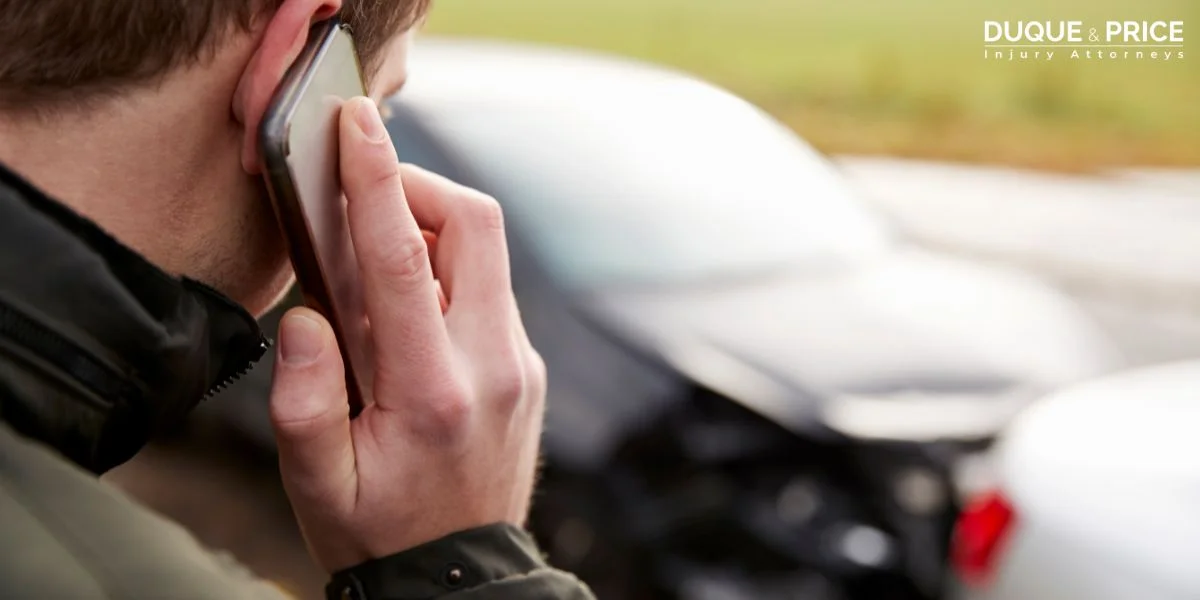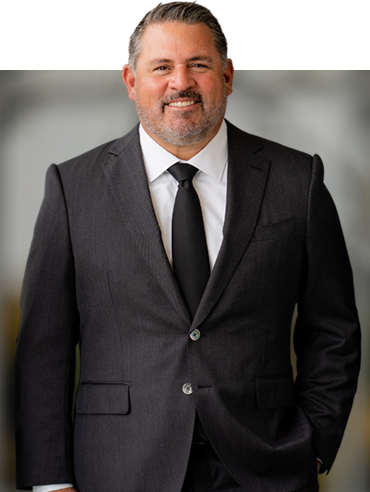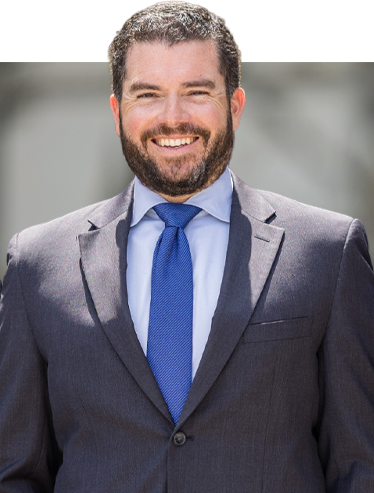Corona Car Accident Lawyer
Corona Car Accident Attorney

On California’s congested highways, auto accidents are a terrible reality that frequently have life-altering effects. Knowing the typical causes, possible injuries, and legal ramifications of an auto accident can make it easier for you to deal with the fallout. A Corona car accident lawyer can help you navigate the challenging legal system and make sure you get the compensation you are entitled to in Corona and the surrounding areas.
Why Choose Us?
Our team has a thorough understanding of the regulations pertaining to auto accidents in Corona, California, which we utilize to create strong cases on behalf of our clients. Because of our reputation and success record, we offer the confidence and peace that come with having an accomplished and trustworthy legal team on your side. Selecting Duque & Price means hiring a partner who can support you from the first meeting until the issue is resolved.
Frequent Causes of Automobile Accidents in California
There are many different reasons why cars can crash, most of which are avoidable. Knowing the typical causes of accidents can aid in preventing them as well as determining who is at fault when they do happen. In California, the following are some of the most common reasons for auto accidents:
- Distracted driving. This is one of the main factors that contribute to auto accidents. This covers managing in-car technology, eating, talking on the phone, and texting while operating a vehicle. When driving, even the smallest distraction can have disastrous results.
- Driving Under the Influence (DUI). DUI is one of the riskiest driving habits, as alcohol and drugs impair a driver’s judgment, coordination, and reaction time. DUI is still a major factor in accidents, injuries, and fatalities in California, even with severe legal sanctions in place.
- Driving aggressively. Tailgating, weaving in and out of traffic, and excessive speeding are examples of driving aggressively. Everyone on the road is put in danger by this behavior.
- Weather. Driving can be dangerous when there is rain, fog, or other inclement weather. Accidents are more likely to occur on wet roads due to decreased visibility, slick surfaces, and lower speed, especially if drivers do not modify their driving behaviors.
- Driver fatigue. Driving while fatigued has the potential to be just as deadly as driving while intoxicated. Excessively fatigued drivers run the risk of falling asleep at the wheel or having poor judgment and reaction times, which can result in catastrophic accidents.
Typical Injuries After Car Accidents
Injury severity in auto accidents can vary greatly, ranging from mild to fatal. The type of collision, the speed of the participating cars, and whether the occupants were wearing seatbelts are some of the factors that frequently affect how severe the injuries are. After an automobile accident, the following typical injuries might happen:
- Whiplash. One of the most frequent injuries sustained in auto accidents is whiplash, especially in rear-end crashes. Headaches, stiffness, and neck pain can result from the abrupt jolting of the head and neck, whipping it forward and backward. Whiplash may be minor, but it can also result in chronic pain and problems moving around.
- Shattered bones and fractures. The power of the impact during an automobile accident can easily result in shattered bones or fractures. Areas like the arms, legs, ribs, and clavicle are frequently damaged. Many times, immobilization, surgery, and prolonged rehabilitation are required for recovery from these injuries.
- Head and brain injuries. A hit to the head during an automobile collision can cause traumatic brain injuries, or TBI. From minor concussions to serious brain damage that impairs behavior, memory, and cognitive function, symptoms can vary widely. A medical professional should be consulted, and even a small head injury should be treated seriously.
- Back and spine injuries. Automobile collisions can result in injuries to the back and spinal cord, which can cause paralysis, ruptured discs, or even chronic discomfort. Physical therapy, long-term care, and surgery are frequently needed for spinal injuries.
- Internal injuries. The force of an automobile collision can result in internal injuries, such as internal bleeding or damage to internal organs. Even while these wounds might not be seen right away, they could become fatal if left untreated.
- Cuts and lacerations. Auto accident debris, such as broken glass, metal, and other materials, can result in cuts and lacerations. Some may be superficial, while others may be deep, needing sutures or surgery and possibly leaving scars.
- Emotional trauma. In addition to physical harm, car crashes can cause emotional and psychological damage, such as depression, anxiety, confusion, and post-traumatic stress disorder (PTSD). Emotional harm may necessitate long-term care and therapy and can be just as incapacitating as physical harm.
How Automobile Accident Fault Is Determined
As it directly affects who is liable for damages, assigning blame is an important part of any auto accident claim. In California, the concept of negligence is used to determine who is at fault. This is how fault is usually evaluated:
- Police reports. The responding police officer will compile observations, witness accounts, and any citations issued into a report following an accident. The police report can be a useful piece of evidence when proving fault, even though it does not establish legal liability.
- Negligence. The idea of negligence, which denotes a driver’s failure to use reasonable care in a given situation, is frequently the basis for determining fault. A driver can be deemed negligent and, hence, at fault if they were going too fast, inattentive, or ran a red light.
- Comparative negligence. The “pure comparative negligence” system is used in California. This implies that you are still entitled to compensation, even if you had some role in causing the accident. Your percentage of fault will be deducted from your reimbursement, nevertheless. For example, you will still be entitled to 80% of your damages, even if you are judged to be 20% at fault.
- Eyewitness accounts. People who witnessed the accident may be able to offer insightful accounts of what transpired. Their testimonies can support your version of events and prove the other party’s carelessness.
California Statute of Limitations
The date by which you must legally file a claim after a car accident is known as the statute of limitations. In California, this limit varies based on the kind of claim:
- Personal injury compensation. You usually have two years from the date of the incident to initiate a personal injury claim if you are hurt in an automobile accident. Claims for reimbursement of medical costs, lost income, pain and suffering, and other associated losses must be filed within this time frame.
- Claims for property damage. The statute of limitations for property damage claims, such as damage to your car, is three years from the date of the collision. This allows you more time to pursue payment for repairs or, if your car was totaled, the fair market value of your asset.
- Claims made against governmental bodies. Different regulations apply if your automobile accident involved a government vehicle or was brought on by a hazardous road condition. Within six months following the accident, you have to register a claim with the relevant government body. You will then have six months to initiate a legal claim if the agency rejects your claim.
- Exemptions. The statute of limitations may be extended under specific circumstances. The clock may begin to run later, for instance, if the victim is a minor or if the injury was not seen right away.
FAQs
What’s the Largest Percentage That a Lawyer Can Take From a Settlement?
In California, the largest percentage that a lawyer can usually take from a settlement varies. This depends on a lot of things, like how hard the case is and whether it goes to trial. The contingency fee is generally less if the case is settled before trial. However, you should talk about the exact percentage with your lawyer before hiring them, and it should be written down in your contract with them.
How Much Do Lawyers Take From Settlements in California?
A lot of California car accident lawyers only get paid if you win your case. This is called a contingency fee basis. Suppose that your lawyer’s contingency fee is 33%. This means that they will take 33% of any money you win. This number could be different based on what you and your lawyer agree on, how hard the case is, and what stage it is in.
What Is the Maximum Contingency Fee in California?
There is no maximum contingency fee in California. The amount depends on a number of variables, including the case’s complexity and whether it proceeds to trial. The contingency fee is typically less if the claim is settled out of court. The precise proportion, though, is negotiable and needs to be specified in your contract with the attorney.
How Much Can You Sue for Pain and Suffering in California?
The majority of personal injury claims in California do not have a predetermined cap on the amount of money that can be claimed for pain and suffering. A number of variables, including the severity of the injury, the impact it had on your life, and other considerations, will determine the amount.
Contact Duque & Price Today
If you have been injured in a car accident, an attorney at Duque & Price can help. Contact us today to speak with a representative and get started.
Corona, CA Car Accident Resources
- California Car Accident Statistics
- Things Not to Say After a Car Accident
- What to Do After a Car Accident That’s Not Your Fault in California
- How Long Does It Take to Settle a Car Accident Claim in California?
- How Much to Expect From a Car Accident Settlement in California?
“For trusted legal guidance after an accident, explore our
California Personal Injury Resources to protect your rights.”
Meet Our Corona Attorneys
|
|
|
Corona, CA Car Accident Law Firm Reviews
⭐⭐⭐⭐⭐ “I was in a car accident that wasn’t my fault and hired the Law Offices of Duque & Price. From day one, Brent (my attorney) and Jana (my case manager) were incredible. They explained the process clearly, handled all the paperwork and insurance calls, and kept me updated without me having to chase anyone. They also made sure I got the medical care I needed and took the stress off my plate so I could focus on healing. In the end, they negotiated a strong settlement that I’m very happy with. Professional, responsive, and genuinely caring—exactly what you want after an accident. I highly recommend Duque & Price, and a special thank you to Brent and Jana for going above and beyond!” — Tim T.
⭐⭐⭐⭐⭐ “Overwhelmed by dealing with insurance after a car wreck, I was referred to Brent Duque by a friend and their office made the entire process so much easier to handle. Brent himself called me, and the rest of his team (Ralph, Charlotte, and Jordan) were in constant contact throughout the process, always warm and kind through all their communications!
If you’re needing an injury attorney, Duque and Price is my recommendation!” — Bess Green
Request A
Free Consultation
Fields Marked With An ” *” Are Required




